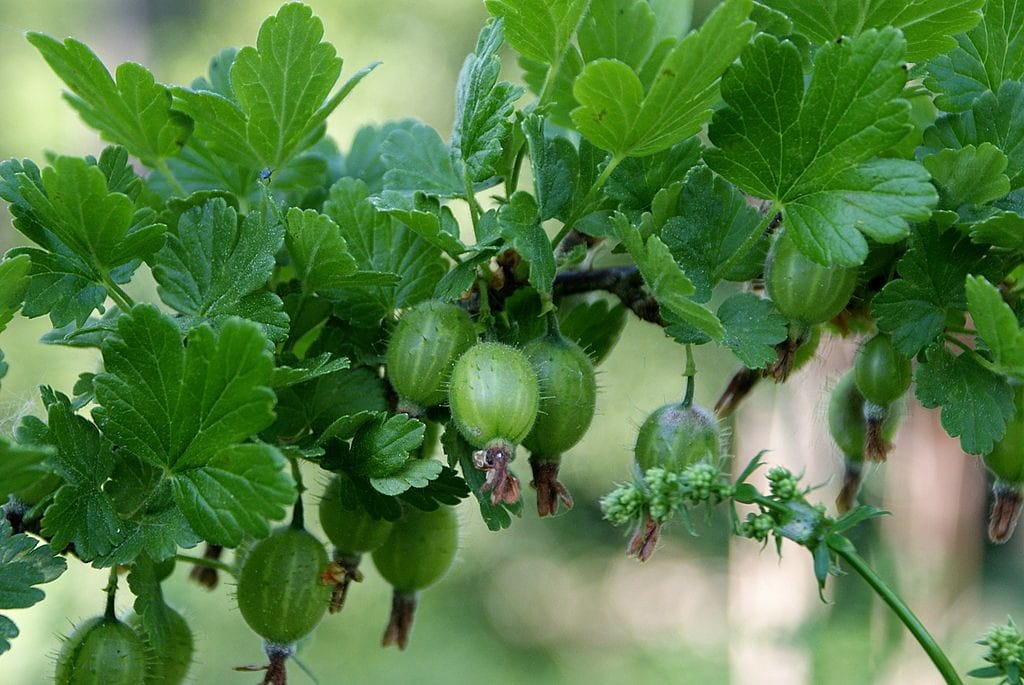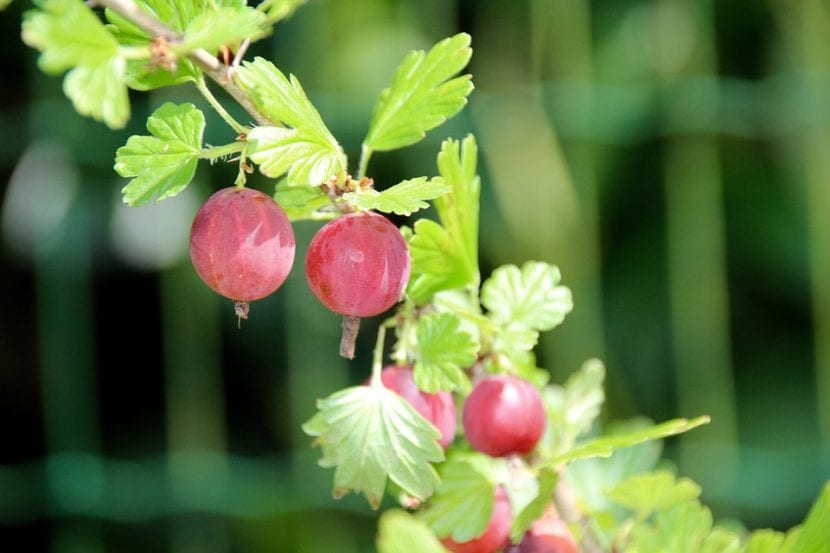
Do you like to try new things? Then get yourself a copy of gooseberry, a fantastic plant that produces edible fruits that you can grow both in pots and in the garden. We take care of telling you what their care is 🙂.
You dare? You will not regret it.
Origin and characteristics

Our protagonist is an evergreen shrub native to Europe, Northwest Africa and Southwest Asia Minor whose scientific name is Ribes uva-crispa. It is popularly known as the European gooseberry or gooseberry. It reaches a height of 1 to 3 meters, and is highly branched. The branches are covered with thorns. The leaves are trilobed or pentalobed, deeply crenate, with well marked veins.
The flowers are flared, axillary, and can be solitary or appear in groups of two. The fruit is an edible berry with a hairy appearance, green, red or dark purple in color, with a sweet-sour taste..
What are their cares?

If you want to have a copy, we recommend that you provide it with the following care:
- Location: outside, in semi-shade or in full sun.
- Earth:
- Pot: universal growing substrate.
- Garden: it must be fertile, well drained, and have a pH between 6 and 7.
- Irrigation: frequent, avoiding waterlogging. In general, it must be watered 4-5 times a week in summer, and every 2-3 days the rest of the year.
- Subscriber: in spring and summer with organic fertilizers, such as guano, herbivorous animal manure, compost, mulch, or others.
- Multiplication: by seeds in winter (they must be cold to germinate), also by layering, taking a branch and holding it to the ground to take root.
- Pruning: late winter. Dry, diseased or weak branches must be removed, as well as those that intersect.
- Rusticity: it supports frosts down to -7ºC, but does not like excessively high temperatures (30ºC or more).
For what do you use it?

The gooseberry can be used as an ornamental plant, but its most popular use is culinary. With the fruits cakes, sorbets, jellies and syrups are prepared; and they are added in puddings, salads and chutneys. Jams are also made.
What did you think of this plant?
I have a uva-espina-ribes-uva-crispa bush. And another of ribes rubrum. They were very well developing stems and leaves, suddenly both are losing their leaves at full speed, presenting evidence of drying in them.
Can something be done?
Thank you
Hi Josep.
First of all, I would recommend that you take a good look at the leaves, on both sides, to see if they have any pests, such as mealybugs or aphids.
If they don't, then check for stains. For example, brown spots are often an indicator that they are not watering as often as they need to.
In the event that they have nothing, that is to say, that the only symptom is the fall of leaves, I am inclined to think that they lack water. Now in summer they have to be watered more often. In addition, you have to pour water on them until the soil is well soaked, so that it reaches all the roots well.
Also, in the event that they do not have any pests, it is interesting to fertilize them, and thus give them energy to grow. To do this, you can apply natural fertilizers, such as compost or earthworm humus.
If you have any further questions, contact us.
A greeting.